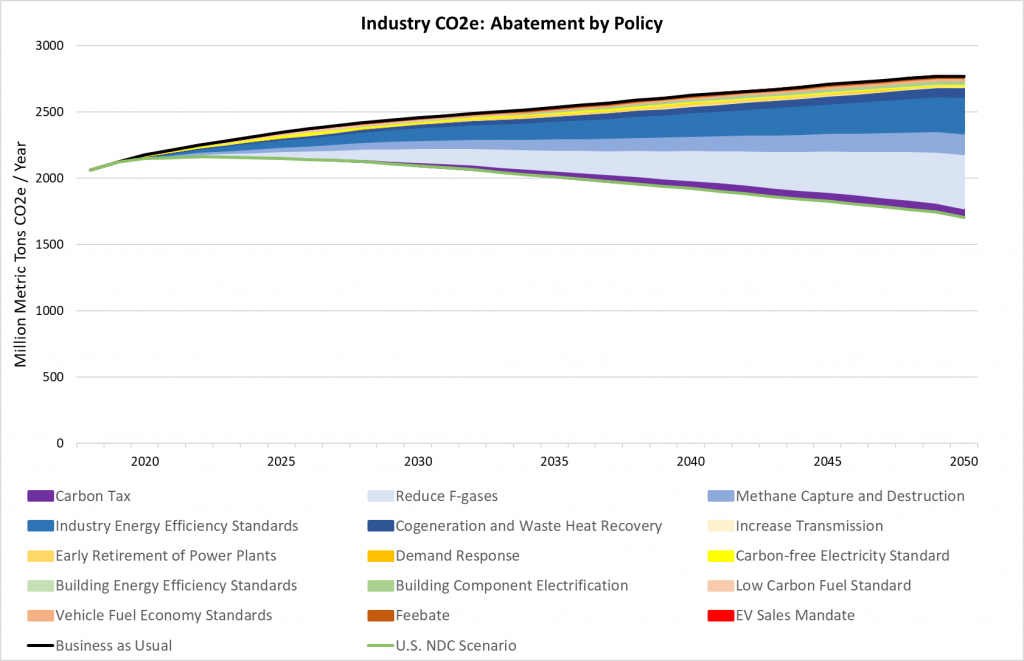Net-zero U.S. emissions has become a hot topic in climate policy discussions, and not a moment too soon. Against the backdrop of IPCC reports that we have roughly a decade to slash emissions, multiple rapid decarbonization pledges have sprung up among presidential candidates, governors, and utilities.
But what actual policy package would be required to reach net zero U.S. emissions, and what would that mean for our energy economy?
A substantial new update to Energy Innovation’s peer-reviewed Energy Policy Simulator can help answer those questions and more, with many new modeling capabilities. The new EPS abilities are demonstrated in a four-part research series on our Forbes column outlining the exact policy pathways to reach economy-wide net zero emissions by 2050 in the industry, buildings, transportation, and electricity sectors.

U.S. EPS version 2.0 features dozens of new capabilities, including:
- Finer control over carbon pricing behavior, carbon-tax driven reductions in industrial process emissions, and simulation of cap-and-trade policy.
- The ability to model hydrogen supply, hydrogen-fueled transportation, and possible uses in industry and buildings.
- Policy modeling for electric vehicle charger deployment, industrial material efficiency and additive manufacturing, and shifting consumption of animal products to plant-based products.
- New fuel types including crude oil, fuel oil, propane, butane, and municipal solid waste.
- Estimates of energy import and export flows, for each energy type.

Industry CO2e abatement by policy in net zero emissions
EPS 2.0 is straightforward to use via its online interface, and is open-source, so you can easily see and adjust any assumption or equation. The model update includes more than 40 new types of output graphs, to better depict modeling results in detailed visual representations.
As momentum accelerates for serious climate action, policymakers must be able to sieve out the options that will make a big difference, and those that cannot. It is likewise crucial for them to understand the health effects of different policies, the rate each policy reduces CO2 emissions, and different policies affect the economy.
The EPS is a powerful, easy-to-use model, ready for your experimentation. It enables governments to design and implement the most effective decarbonization policies – that’s what we need.
Check it out: www.energypolicy.solutions
